Samsung Galaxy Note 4 vs Apple iPhone 6
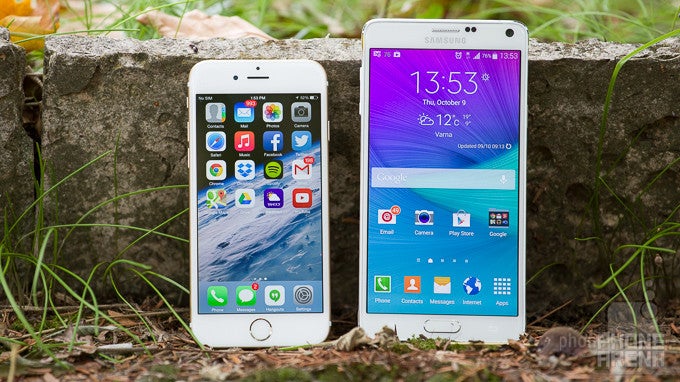
Introduction
The Samsung Galaxy Note 4 is a phablet. One of the very best on the market right now, actually. But its 5.7-inch screen can be a polarizing factor. So much so that another popular device, the iPhone 6, will likely also come to mind if you're considering a new handset. Especially if you're uncertain that a larger screen is necessarily the better choice. In that kind of scenario, when you're feeling on the fence between two form factors, digging out the pros and cons of both phones can swing the discussion in either one direction. So take your legal pad out, for we're about to go through the Note 4's and the iPhone 6's every nook and cranny.
Design
The chubbier Note 4 is less elegant and inspiring next to the iPhone 6 and its all-aluminum unibody, but we can't argue with the practicality of its design.
Putting aside the differences in size for now, it should be immediately obvious that the underlying design philosophy with Samsung and Apple is quite different. For its part, Samsung definitely managed to create the most attractive Note device yet – the phablet's most basic shape is still of a rounded rectangle, but some changes are impossible to miss. For example, while still on the topic of the shape, Samsung has added four bumps at the four edges of the Note 4, the idea being that they'll better absorb shock from the inevitable drops that most devices go through. Also different are the phone's frame and rear shell – we're now looking at a metal encasing and a newly-textured, but still fake leather back.
With the iPhone 6, the narrative is different. For one, Apple continues its track record of using aluminum only for the exterior of its phone, but there are some generational changes from the now aging, iPhone 5s. The most important of those is the switch to a circular, tube-like frame, and the addition of several contrasting plastic bands at the back, where the antennas reside. Obviously, deciding which one you like more is a personal matter, but we tend to like the way the iPhone 6 sits in our hand better.
Unpinning the topic of size, it should be perfectly understood that the Note 4 is a significantly bulkier device in all possible meanings of the word – height, width, thinness, and, of course, weight. Indeed, despite the relatively bezel-heavy construction of the iPhone 6, it's still a one hand-friendly device, while the Note 4 requires you to make use of both for the most part. Thankfully, Samsung (and Apple, too) have had the good sense of placing the power and volume keys on the right and left side of the device, respectively, making them easy to reach. We are also happy to note that these all provide great travel and feedback.
Display
The Note 4's display is not only larger and more pixel-dense, but also more color-accurate overall.
You already know that the Note 4 is the bigger device between the two, and the only culprit here is its display. We're looking at a massive, 5.7-inch Super AMOLED screen by Samsung, with an extremely high resolution of 1440 x 2560 pixels (Quad HD). This works out to a whopping 515 pixels per inch – more than your eyes can take advantage of unless you spend your hands-on time looking at the screen an inch from your face. Turning to the iPhone 6, we've got a much smaller, 4.7-inch IPS screen with a comparatively lower resolution of 750 x 1334 pixels, good for a density of 326 ppi. Sure, this implies an obvious disadvantage for the iPhone 6, but as we noted before, in most usage scenarios, the iPhone 6 appears essentially as sharp as the Note 4.
But what about color reproduction? Interestingly enough, we have a pretty unusual development here – Samsung's Super AMOLED screen actually proves to be superior, which hasn't been the case at all until now. Instead of the usual overstated hues that have become synonymous with AMOLEDs, we now have a well-tuned display if you choose the 'Basic' display mode, with an outstanding color temperature of 6667 K (6500 K being the reference value), and fairly low levels of color and grayscale errors. All of this translates into a natural image that adheres to the conventional sRGB color space, and that's great. In comparison, the iPhone 6 is slightly lagging behind, but only because the Note 4 aced this category. Its screen's color temperature is good, at 7162 K, but a bit cold in comparison. Color error is also fairly low, but not as good as the Note 4. Of course, those of you who appreciate the AMOLEDs of old, can still choose 'AMOLED photo' to get the familiar, punchy look that Samsung devices are known for. Lastly, we do have to point out that the Note 4's average gamma, at 1.97, is inferior to what you get with the iPhone 6 (2.23, with 2.2 being the reference value). This is result of brighter highlights than optimal only, however – dark parts of the image are still as dark as they should be, so this translates to slightly more contrasty image.
One area in which iPhones traditionally excel remains a domain of the 4.7-inch panel of the 6, however – maximum brightness. The Galaxy Note 4 peaks at 468 nits, which is good, but not exactly as great as the 606 nits of the iPhone 6. In practice, both phones provide a great viewing experience out on the sunlit street, though the iPhone 6 is a bit better in this regard. For what it counts, the AMOLED screen of Samsung's phablet can go as low as 1 nit (7 for the iPhone), and that implies a bit superior comfort in environments with poor lighting, like reading in the bed.
Interface and functionality
Samsung's answer to Apple's more consistent and polished interface is to literally drown you in features. Some of those are good, but others need to be binned.
The most shocking difference between the Note 4 and the iPhone 6 is not simply the gap between their sizes – they also run on altogether different software platforms.
With the Note 4, we're looking at a heavily-skinned version of Android 4.4.4 KitKat, dubbed TouchWiz. Now, TouchWiz has gone through some very positive changes as of late, specifically in terms of aesthetics, and we now have far more intriguing visuals that are flatter and more colorful than before. We say specifically, because some things haven't changed – like the fact that Samsung continues including every feature it has ever conceived, good or bad, into the package. Thankfully, while these cause some disorder in the settings menus, there are enough of them that a few of them were bound to be excellent.
A few examples are in order, and we'll start with Smart Stay – a deceptively simple, but absolutely helpful feature that keeps the screen on for as long as you're looking at it. This allows you to set a low screen time-out value in order to conserve battery, but without the usual annoyance of having to constantly tap on the screen to keep it on. Also great is MultiWindow – a feature well-suited for the Note 4's large screen – as it allows you to run two apps simultaneously, side-by-side. Speaking of the larger screen, we ought to also mention the specially-crafted One-handed mode, which re-sizes the entire UI so that you can reach all elements even when using the Note 4 single-handed. Last, but far from least, comes the iconic S Pen stylus, which has been further polished from the one available with the Note 3. Samsung claims that it has increased the pressure needed for you to write on the screen, so that it's more in line with the pressure you exert when using a normal pen, and there are, of course, a few new features. Air Command, for example (the semi-circle with options that automatically pops up on the screen when you remove the S Pen) has been rearranged and new features, like Smart Select, have been added. Smart Select works like a wonder – just free select content and it will take a snap and then analyze it. If there are contact details and addresses, Smart Select will automatically make those parts actionable, so you'll be able to instantly call the number or find the address on Google Maps.
As for the iPhone 6, it's running on the latest version of Apple's mobile operating platfrom – iOS 8. The latest iteration of the software brought no visual changes, so we're still looking at the elegant, flat aesthetics introduced with iOS 7. Thankfully, Apple has added a few new features, some of which are great. One example is the ability to finally change the default software keyboard, and go for an alternative through the iTunes store. Also new is a special Reachability feature, which is a bit alike to what Samsung has going on with its One-handed mode, though the way it is executed is different – you just double tap the circular home button in order for the top-most parts of the screen to be brought down, within a thumb's radius. The implementation is arguably more elegant, but it's not exactly as thorough. Finally, we can't skip Apple's fingerprint implementation (TouchID), which is excellent. In comparison, the Note 4's fingerprint scanner (also embedded into the home key) is more problematic, as you need to swipe your finger – awkward with the scanner's placement.
Processor and memory
Despite its seemingly monstrous hardware, the Note 4 is still not as a great a performer as the iPhone 6. And it's not because of its higher resolution.
It probably comes as no surprise, but Samsung picked Qualcomm for the Note 4's processor – though keep in mind that in certain regions, the company's own Exynos chips are being utilized. Anyway, on-board the US version of the company's latest phablet is the 28nm Snapdragon 805, with its four 2.7GHz Krait 450 cores and Adreno 410 GPU. All of this is complemented with 3GB of LPDDR3 RAM. In comparison, Apple's ARMv8-based, 64-bit A8 processor (20nm) with its two 1.4GHz Cyclone cores, PowerVR GX6450 GPU, and 1GB of RAM, appears outmuscled, but that's not at all the case.
Indeed, while the Note 4 provides a smooth ride whatever you go for, synthetic benchmarks show that it is having a harder time pushing all those extra pixels, especially when talking about heavy graphical content like games. In those scenarios (and even when talking about off-screen results), the A8 actually proves a better performer.
As for native storage, Note 4 users will have to settle for 32GB, though, if needed, expansion is possible (up to 128GB more) through a microSD card. With the iPhone 6, you've got three options – a 16, 64, and 128GB models, neither of which supports storage expansion. In other words, it comes down to this: Note 4 users can get extra space at a lower price, though iPhone 6 adopters are going to enjoy faster read/write speeds by going for the larger models (for a price).
Internet and connectivity
Can't complain with either.
Browsing on the Note 4 involves an initial choice – a pick between Samsung's own AOSP-based browser, and Google's Chrome. In our experience, both are speedy performers, and navigation is always buttery smooth. That said, we tend to stick with Chome due to its ability to natively synchronize with its desktop counterpart. With Apple's iPhone 6, you're looking at its time-tested, excellent Safari browser. Like Chrome, Safari can also synchronize with its desktop version, and it also offers a bandwidth-saving 'Reader mode', which does away with any of the webpage's assets that are not text. What's more, according to synthetic benchmarks, if speed is what matters the most to you, then the iPhone 6 running on Safari is the clear winner – results indicate a significant advantage in load times.
On the connectivity end, we can't really complain. There are differences though. For example, the Note 4 boasts Category 6 LTE speeds (up to 300 Mbit/s downlink), while the iPhone 6 is limited to Category 4 LTE (150 Mbit/s). This implies an inherent advantage, but do keep in mind that we're still far from a time when carriers will be able to support as much bandwidth consistently. Also important if you're traveling – the iPhone 6 offers supports for more LTE bands, so you don't have to worry about the specific waves a given country is making use of (in its defense, the Note 4 is also pretty robust in this regard).
Moving on, we've got Bluetooth 4.1 EDR with the Note 4 (Bluetooth 4.0 only with the iPhone 6), 5GHz Wi-Fi, Wi-Fi calling, and assisted GPS with GLONASS support with both. The two also boast NFC, though iPhone users will only be able to use it with Apple Pay – a service we expect to overshadow what Google Wallet brought to the table when it goes live later in October. The one perk the iPhone 6 is missing (and that we love) is an IR blaster – available with the Note 4 – for remote control over home electronics.
Camera
Tit for tat: Better outdoor performance with the Note 4, but worse low-lighty photography.
When looking at the camera configuration of the Galaxy Note 4, it's hard not to like what Samsung is offering. We've got an optically-stabilized (OIS), 16-megapixel camera with a 1/2.6'' sensor (16:9) with 1.12um pixels, complemented by wide, f/2.2 lens, an LED flash, and super-quick phase detection auto focus. Up at the front, the company has fitted a generous, 3.7-megapixel selfie camera with even wider, f/1.9 lens and support for 1080p video.
In Apple's camp, we've got an 8-megapixel iSight camera with a smaller, 1/3'' sensor (4:3) with 1.5um pixels and f/2.2 lens. There's also a two-tone LED flash on board, along with a similar phase detection auto focus implementation. For selfies, the iPhone 6 offers a fairly low-res, 1.2-megapixel snapper, capable of 720p video capture.
Looking at the camera interfaces of the two devices, the difference in the companies' respective approaches is impossible to miss. For its part, Samsung has endowed the Note 4 with a ton of extra shooting modes (360-degree panoramas, Beauty Shot, and even Food Shot), along with manual settings for ISO, white balance, metering, and the like. Obviously, in order to accommodate such a wealth of options, the UI doesn't exactly feel compact or well-ordered. This is the exact opposite of what Apple has going on – a simplistic, almost sterile UI, with minimal manual settings (you can only tweak exposure on the go) and relatively few shooting modes.
So let's talk image quality. During the day and when outdoors, both shooters handle themselves excellently. Indeed, for the most part, putting either in the lead is trying, as they both produce such great shots – but they're still different enough for us to spot some differences in behavior. For example, the iPhone 6 churns out slightly warmer shots than ideal, allowing the Note 4's colder-looking shots to inch closer to what we were seeing with our own eyes. We generally stumbled upon no glaring issues with exposure, and it has to be said that both snappers resolve detail admirably. That said, should you wish to zoom into a picture or perhaps even print it out, you'll find that the Note 4's higher resolution camera has a notable lead when details are concerned.
Turning to images snapped in less ideal, indoor environments (light not as abundant), it's becoming obvious that the iPhone 6 is the better performer on the whole. Its shots are exposed more correctly, making brighter, but not unrealistic, photo. On the other hand, the Note 4's shots are often comparatively darkish, covering detail in shadows and darker parts of the composition. Despite its OIS gizmo, the Note 4 also proves to be inferior to the iPhone 6 when talking night shots of well-lit buildings with no flash – in our experience, the Note 4's often overexposed (burned highlights) for such shots. In contrast, the iPhone 6 manages itself excellently, showing true to live exposure. The single LED flash on the Note 4 makes photos with colors colder than ideal. Such stills are less of an issue with the iPhone 6, thanks to its two-tone LED light.
As for video, we've got two outstanding, versatile camcorders. Both phones support standard 1080p video capture at 30 frames per second, but the Note 4 shines with its ability to also take 1080p footage at silky-smooth, 60 FPS. Overall, the two produce excellent clips, but the iPhone 6 proved better at isolating nearby sound from loud background noises.
Samsung's phablet can also do 4K UHD, though you better have some extra storage if you plan on shooting a lot of video in such a high resolution – the clips are huge. Where the iPhone 6 pulls ahead is slow-mo video – it can do both 120 and 240 FPS (those are also huge), which is more than can be said for the Note 4's limit of 120 frames. Last, but not least, both smartphones can shoot artistic time lapses.
Multimedia
If you're into video, the Note 4 is the clear specialist here.
If you spend a significant amount of your hands-on time with a smartphone glued to the screen, watching video content, there's a pretty good case to be made that the Note 4 is the more adequate device for you to go for. Its 5.7-inch screen is perfect for the purpose – more so than the 4.7-incher of the iPhone 6. Loading video files is also a tad easier (a simple copy/paste operation) compared with having to go through iTunes first with the 6. If you like using your device as-is, you'll probably like Samsung's video player more, as it offers extras like looping, subtitles, and even video editing. You can even re-size the playback window and layer it on top so it follows you where you go. In comparison, Apple's otherwise reliable video player is focused on simply playing back clips.
A situation similar to the above is also true of the two devices' respective music players – the only perk of the iPhone 6 is that its Music app is hooked up to iTunes Radio, and that might appeal to some. Extra functionality, however, is the Note 4's strong suit. Thankfully for Apple, its speaker is a better-positioned to deliver deep, quality audio, even though the Note 4 is louder overall. Only you can tell which one serves your specific needs better.
Call quality
Excellent, but we would have appreciated a slightly louder earpiece with both.
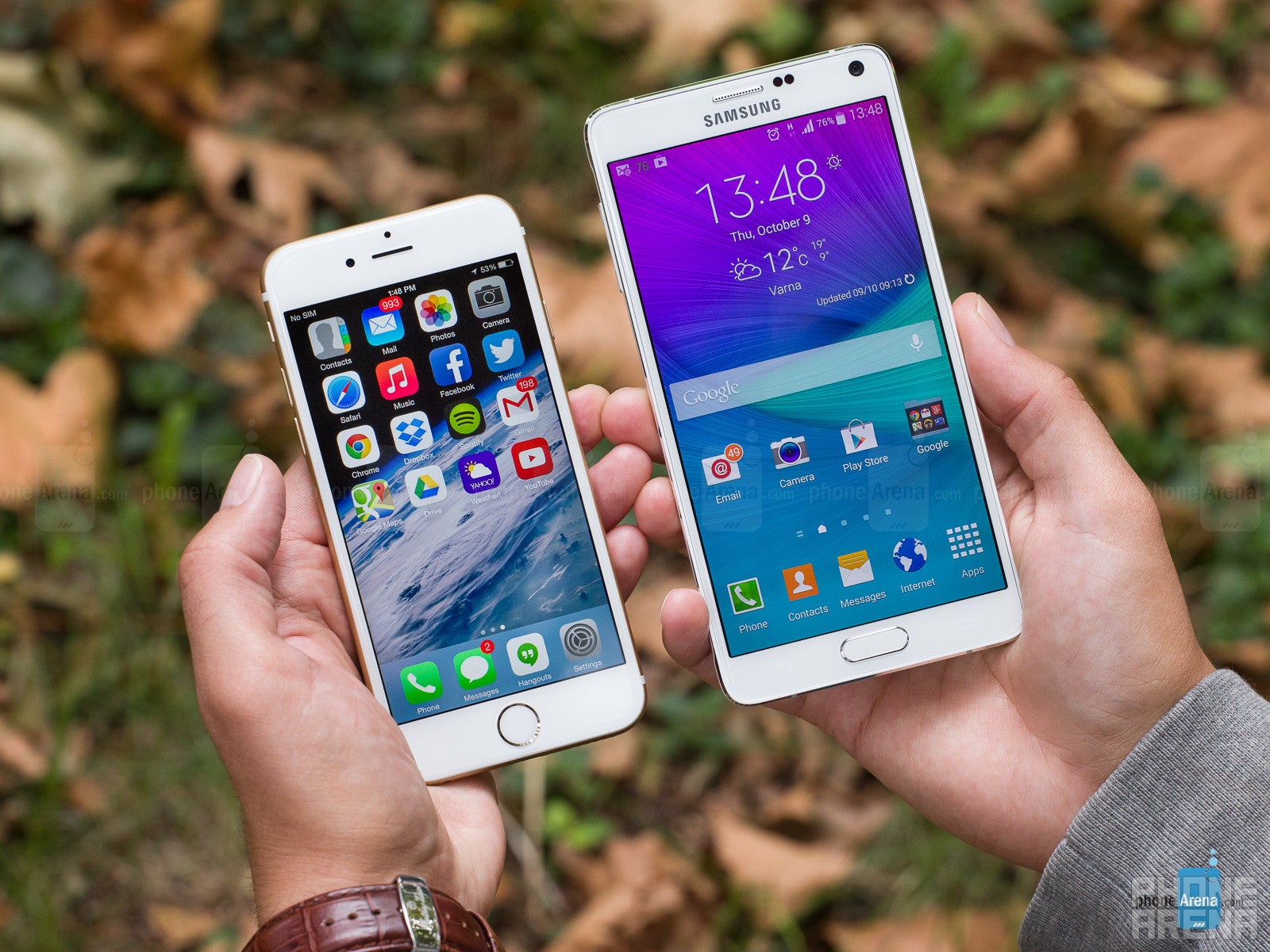
In terms of the microphones the two bring to the table, our experience was similarly top-notch. The other side will recognize your voice easily as tonal information is well-preserved, and sound artifacts and any kinds of distortions are kept at a very acceptable level.
Battery life
There's no dancing around facts: The Note 4 has significantly better battery life.
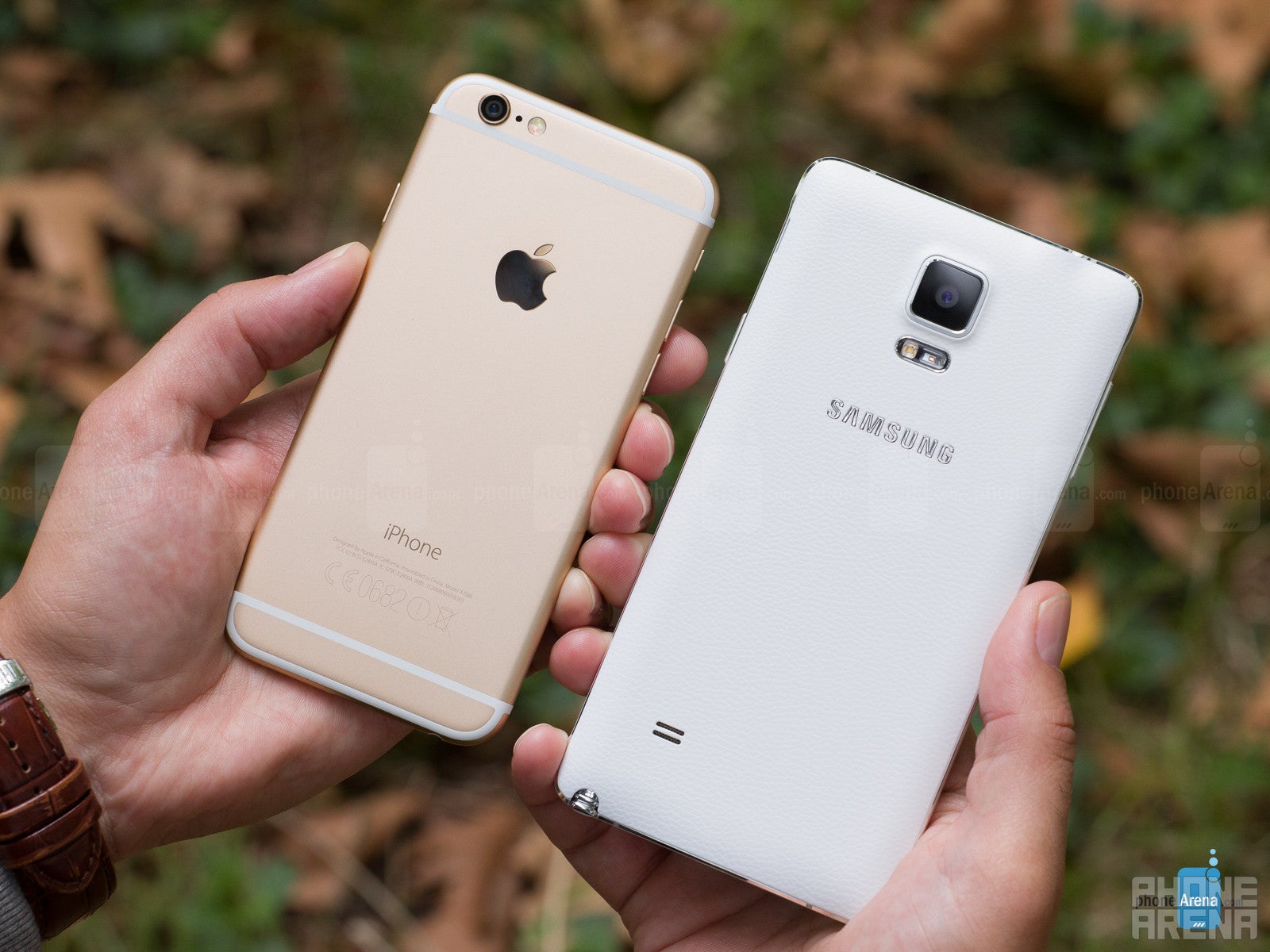
Thankfully for Samsung, despite the increase in size from the iPhone 5s, the iPhone 6's 1810 juicer is still fairly small, and that shows – the 4.7-incher clocked 5 hours and 22 minutes, which is average, and can't at all be compared with what its rival achieved. A clear win for Samsung in this regard – if you value battery life, there's a good reason you should start leaning towards the Note 4.
Conclusion
A scenario where the iPhone 6 and Note 4 are among your considerations is not at all improbable. Sure, at its core, the bigger, 5.5-inch iPhone 6 Plus is a more direct competitor to Samsung's latest, but it doesn't exhaust all the possibilities that you'll be faced with if considering a new flagship.
So go for the iPhone 6 if your only means of transporting the Note 4 is your pants' pockets – the phablet is plenty big, and won't fit comfortably in most cases. Bet on the iPhone 6 if you want to get your hands on the newest, hottest apps first (most apps, and especially games, are often first released on iOS) and prefer a less-complex, easier-to-understand interface. Pick the iPhone 6 if you value low-light photography – it's just better overall in that regard. This, however, is about where the clear advantages of Apple's flagship come to an end.
Indeed, the Note 4 has quite a bit going for it, granted that you're ready to stomach its chubbier profile. The Note 4's screen is not only much larger, but also proved to be the one that is more true-to-life, and the phablet's vast arsenal of extra features works well with it. The Note 4's camera is also more flexible, and image quality is right up there with the best – in fact, outdoor shots during the day ended up slightly better than the iPhone 6's. Its optical image stabilization mechanism also helps you record shake- and tremor-free footage. But perhaps the biggest advantage of Samsung's latest device is its far superior battery life – a very valid concern with most of us.
Not exactly clear cut, is it? Then again, it never is.

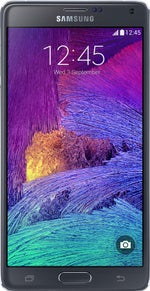
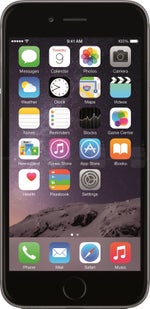











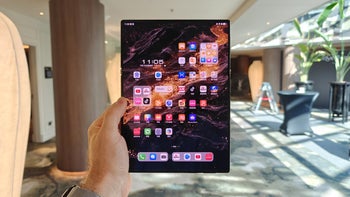
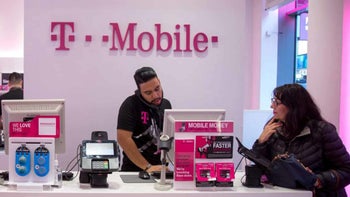



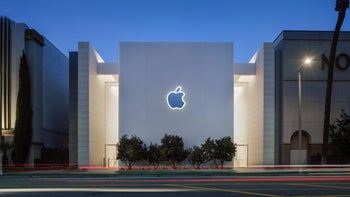


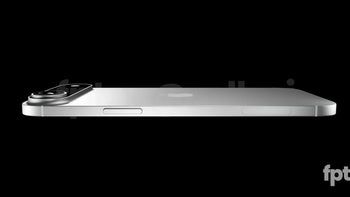
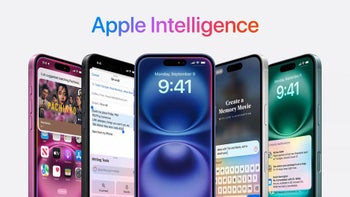






Things that are NOT allowed: